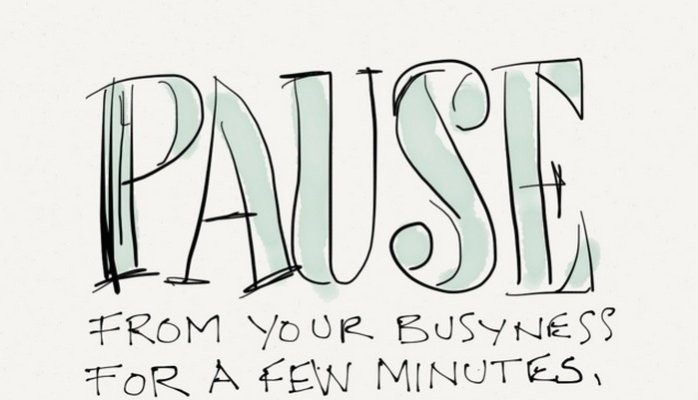
How to Save a Ridiculous Amount of Time
In this series, professionals share their secrets to being more productive. Read the posts here, then write your own (use #ProductivityHacks in the body).
You’re not going to like this. When I share my timesaving technique, your brain may instantly reject it. Your finger will hover, just a quick twitch away from clicking on another link.
But if you resist the impulse to bolt, you might just discover a technique that works incredibly well.
So, please open your mind, and give me 90 seconds, okay?
The easiest, fastest, and most effective time-saving technique is: do nothing.
I don’t mean hang around on the sofa all day and watch TV.
I mean pause on a regular basis and do nothing. Resist the impulse to jump into another task, to check your email, or to pick up the phone. Such impulses are just that… barely-formed urges to remain active. Unfortunately, they lead to a long and winding road of inefficiency. You end up being reactive instead of proactive.
So, the next time you finish a task, do nothing. Sit there for a minute, or two, or even five. Clear your brain.
Do this until all your impulses disappear.
Wait until you no longer feel the urgency to do something, anything, really badly.
Just wait, until you calm down.
When at last you are content doing nothing, allow yourself to consider your next move. Whatever you do next will be the product of calm and focused thought.
“Can this actually work?”
I told you that your brain would reject this strategy, right? You might be thinking, “How can I save time by spending more time doing nothing?”
Most people waste a ridiculous amount of time. You can prove this by going on vacation. When you do, one-half to two-thirds of your responsibilities just disappear. Colleagues and clients find other ways to get what they need.
It turns out that much of what you do is fluff and filler. You have meetings about meetings. You talk about processes and policies that serve no useful purpose on Earth. You check out social media, perhaps for the 14th time today.
Sitting quietly filters out much of the noise. It gives you a chance to reflect on what actually matters. It allows you to recognize what is unimportant versus important.
Let’s say you do a spectacular job of following my advice, and you start spending a total of 30 minutes a day doing nothing. Am I suggesting that this practice will produce over 30 minutes in time-saving? You bet. You’ll almost certainly save hours of time you would have otherwise spent on unimportant activities.
This method costs nothing. You don’t have to buy a new iPad or a dozen apps. You don’t have to hire a consultant.
You just have to be willing to spend a few minutes at a time all alone, doing nothing. Are you brave enough to try it? (If you already have, please encourage others below.)
Bruce Kasanoff is a ghostwriter for entrepreneurs. He is the author of How to Self-Promote without Being a Jerk.
An earlier version of this article appeared on Forbes.

Purchasing Assistant
7yWhen I am trying to accomplish too many things at one time I usually will just sit and take a moment to think and prioritize what needs to be done. I have tried meditating but my mind wonders, I plan on trying to stick with it though. But I will try to just sit and tune into myself without any other distraction in the house. Thanks for this advice, well worth trying.
Mid-Senior PHP / SQL web developer, junior-mid JavaScript. Clean code matters. Detectable interest to AWS, Clojure (which runs on Java RE). Computer vision is the topic to dream about - one day...
8yThis is the beginning of a meditation. The meditation is the state when one thought stays the same for a very very long time.. So long that the thought itself disappears at the end... People I am learning from says that concentration is the state when you are able to keep one thought for about 12 seconds, meditation is the state when you are able to reach 2 minutes. Reaching 30 minutes is the third and the highest state which is usually reachable by advanced practitioners only. Some really interesting articles are written about positive outcomes from daily meditation in schools, job, etc.
Chief Diversity & Inclusion Officer
8yI like the subtle logic of the theory.
Shop Owner at Niceandshiny
8yI'll take that on